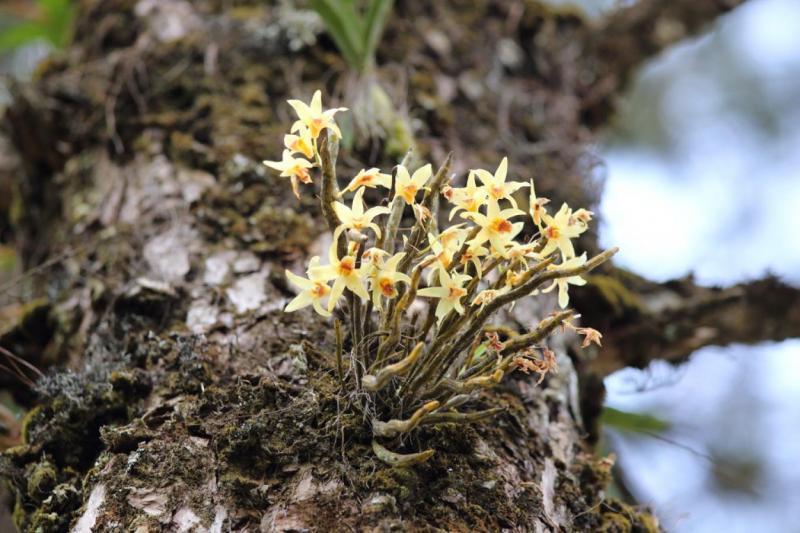Dendrobium heterocarpum
Also known as: The Different Fruit Dendrobium or in Thailand - Ueang si tan in the subfamily: Epidendroideae
Native to: Cambodia China India Thailand
General Information
The Different Fruit Dendrobium is a giant sympodial cool to warm growing epiphytic free-flowering orchid belonging to the sub family Epidendroideae native to Cambodia, China, India, and Thailand.
Plant Description
Sympodial. Grows to 15-150cm. Each new growth has numerous leathery lance shaped, oblong shaped leaves that grow to 10-13cm long. Pseudobulbs grow to 15-150cm
Flowers
Numerous fragrant blossoms appear readily throughout the year
Fragrance
The orchid is fragrant. The fragrance can be described as sweet
Blooming Season
- Autumn
- Spring
- Summer
- Winter
Substrate(s)
- Coarse
Care Notes
This orchid goes into a dormancy phase during winter, during this phase it is best not to provide water unless the plant is starting to look thirsty. The lack of water increases the chance of flowering in spring, and also reduces the likelihood of any rot forming. Do not resume watering until new growth has appeared and is growing strongly.
Often a period of intense growth occurs after dormancy. During this time the amount of light, water and fertiliser the plant receives will directly impact the amount of growth that occurs during this time, and in the case of seedlings, will reduce the time required to reach maturity.
It's recommended to heavily reduce the water amount at the middle to end of autumn to trigger dormancy. Leaves on older bulbs will begin to drop during this time while the newer bulbs continue to mature until terminal leaves appear at the tip of the pseudobulbs.
Repotting can be done any time of the year though it's best to do it in early spring when new growth is appearing as this also means new roots will appear to help the plant anchor into the new media and offset any damage to established roots during the repotting process.
Fragrant:
- IsFragrant
Climate
Grows at low to high elevations. Rainfall ranges from 5mm to 251mm per day, heaviest in August and lightest in February. Humidity ranges from 50% to 83%, highest in August and lowest in March. Temperature ranges from 8C to 31C, highest in April (18C to 31C) and lowest in January (8C to 23C).
Watering
These orchids prefer a constant supply of moisture, with a slight drying out between waterings. Saucers can be placed under pots to retain moisture during hot weather, however the saucers should be removed or let to dry every 1-2 weeks to prevent rot. Keep an eye on the plant especially in hot weather and look for cues of under/overwatering and adjust accordingly.
Fertiliser
dormant-medium-demand-orchid Apply fertiliser regularly at half strength year round. Use a high Nitrogen fertiliser during Spring and Summer. Use a high Phosphorous fertiliser during Summer.
Potting
Due to the growth nature of these plants they are best mounted onto cork, tree fern slabs, or even trees if the climate suits. Water regularly especially in hot weather.
This plant does very well in baskets or suspended pots


